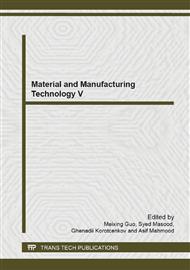p.174
p.179
p.183
p.188
p.195
p.199
p.205
p.210
p.215
Processability Behaviour of Dual Filler Systems Reinforced Epoxised Natural Rubber
Abstract:
Rheological studies of polymers are of great importance in optimizing the processing conditions and in designing processing equipments like injection molding machines, extruders, and dies required for various products. Melt rheological studies give us valuable viscosity data that will be helpful in optimizing the processing conditions. Parameters like melt viscosity as a function of shear rate or shear stress and temperature have become more and more important. Previous study indicated that the flow behaviour of the compound depends on the filler loading. Lesser elastic torque was found with compound containing lower filler content as compared to higher filler content. In this work, effect of dual filler, based on Carbon Black / Silica filled Epoxidised Natural Rubber (ENR) compound was investigated. A total of 80phr of filler content based on passenger tyre tread formulation was used in the experiment. The compounds were prepared by melt mixing in tangential type of an internal mixer. The rheological and the processability properties of the compounds were determined using three different testing instruments namely Capillary Rheometer, Mooney viscometer and Rubber Process Analyzer (RPA). A variation of shear rates (ranging from low to high) was performed, in order to better reflect the actual processing condition in rubber manufacturing. It was found that ENR mix with ratio silica to carbon black 70:10 exhibited the best flow behaviour and processability properties as compared to control and other mixes.
Info:
Periodical:
Pages:
195-198
Citation:
Online since:
June 2014
Authors:
Price:
Сopyright:
© 2014 Trans Tech Publications Ltd. All Rights Reserved
Share:
Citation:


